Understanding your bill | Arkansas
Your monthly bill makes it easy for you to identify key information, understand your energy costs and monitor your usage. The front of the statement provides a summary of your usage and charges in an easy-to-understand format. On the back page, you’ll find specific details about your bill.
Your bill breakdown
Use the dropdown to see additional information about specific charges. Depending on the type of service you receive, your monthly bill details may look different than the example shown below.
Bill overview
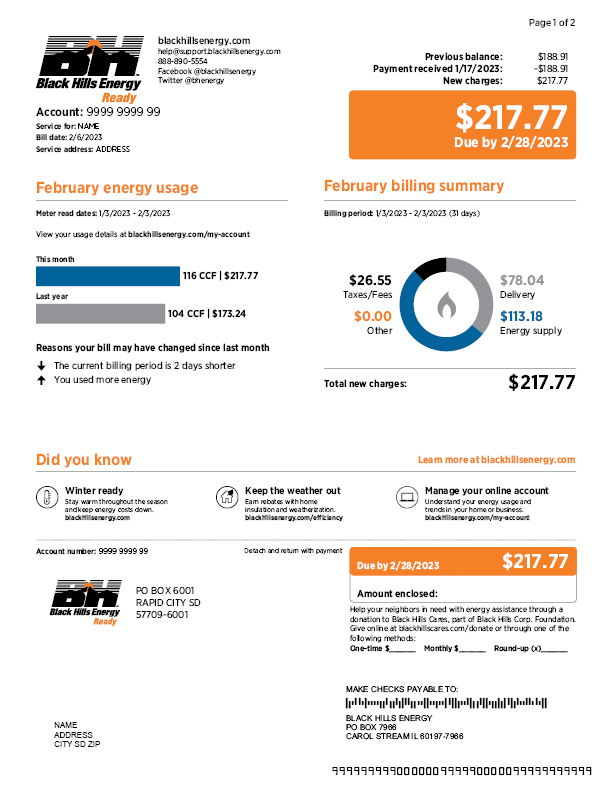
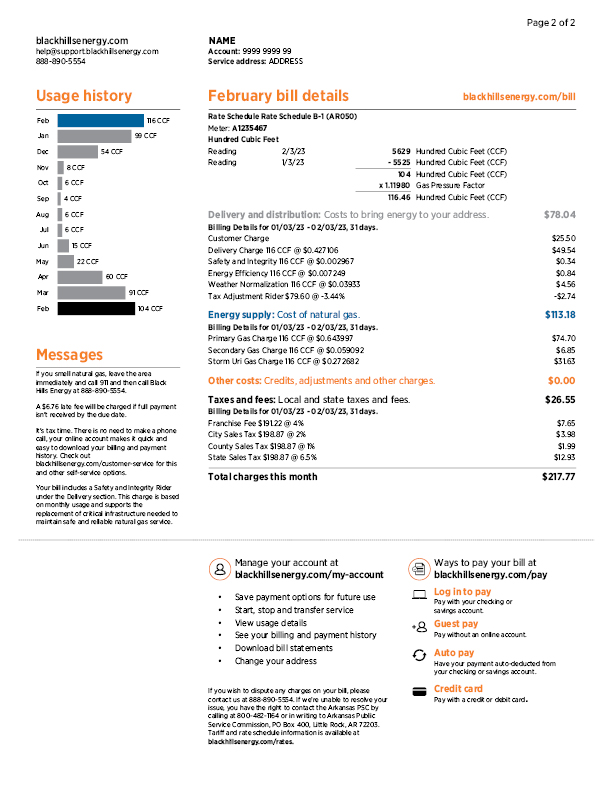
Key information
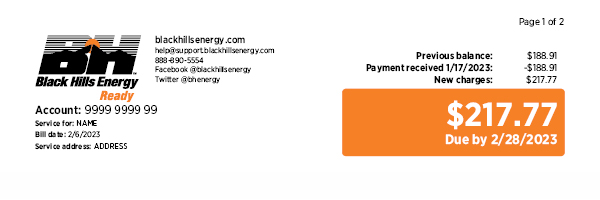
Your due date and the amount due are located at the top of the front page, along with your account number and service address.
Energy usage
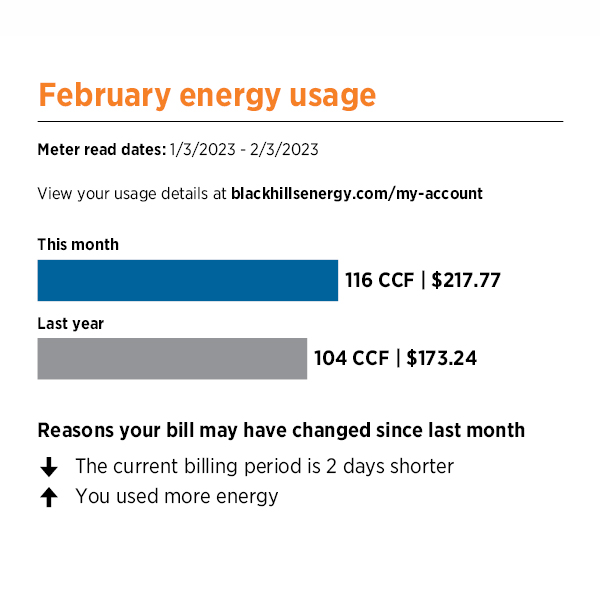
Easily compare this month’s usage to the same time last year and view reasons why your bill may have changed since last month.
Billing summary
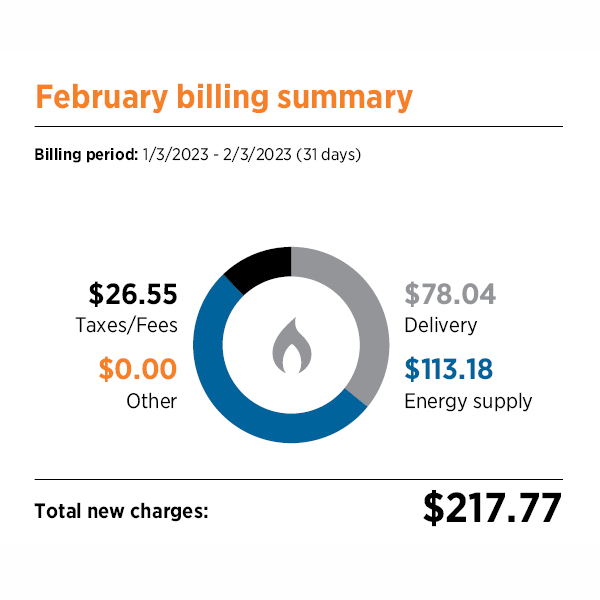
The billing summary breaks down your charges into four categories that are displayed in a simple, easy-to-read chart.
- Delivery: Costs to bring energy to your address. This includes the customer fee, which helps to cover the costs of pipelines, technology and equipment required to deliver that service.
- Energy supply: Pass-through market cost of natural gas.
- Taxes: Local and state taxes and fees.
- Other: Credits, adjustments and other charges included in your bill.
Did you know

In this section you’ll find useful safety information and specific tips to help you save energy and money.
Payment remittance
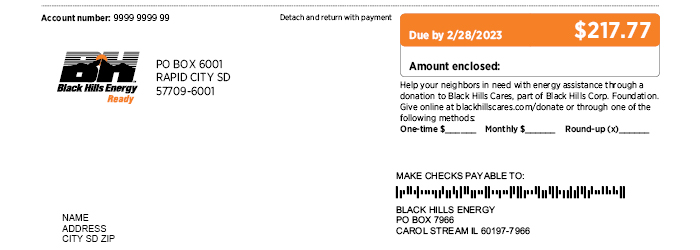
If paying your bill by mail, detach the bottom of the front page and include this with your check in an envelope.
Usage history
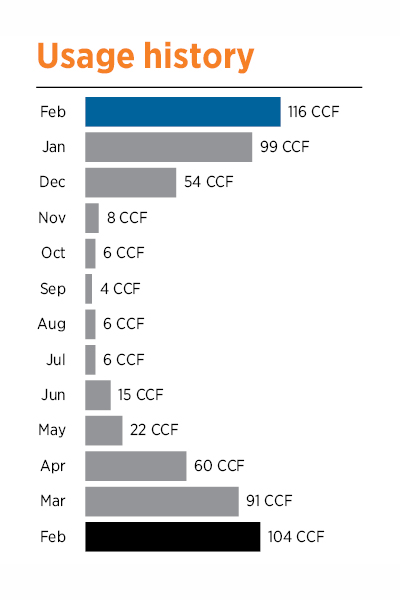
The last 12 months of usage history is available to help you see how this varies throughout the year.
Bill details
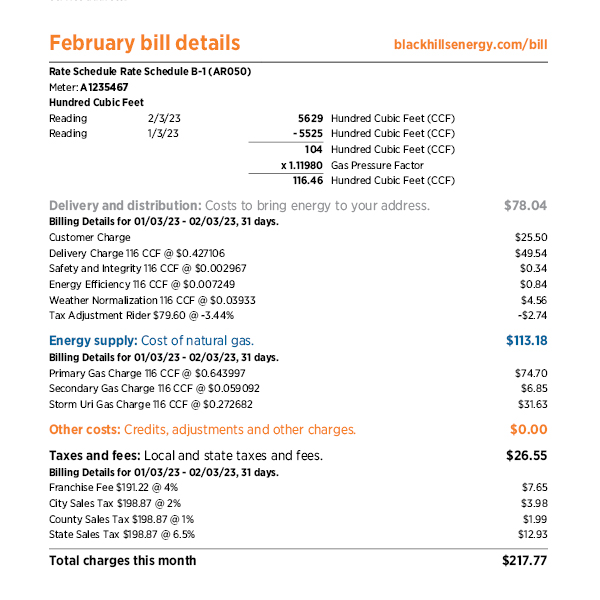
Specifics about your monthly charges are shown by category and color-coded to match the monthly bill summary chart on the front page.
Messages
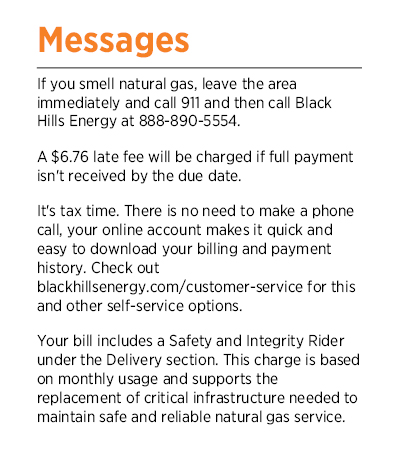
Important information about your account is included in the messages section.
Your account
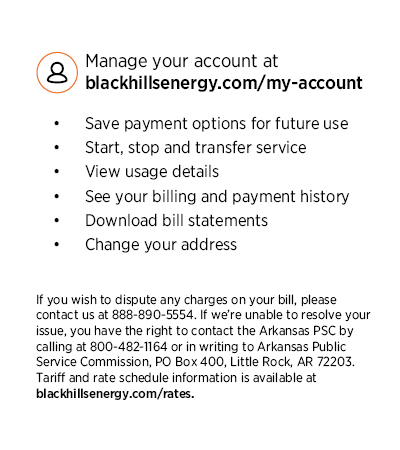
Managing your account online provides easy access to resources and tools, including:
- Viewing your usage and bill history.
- Starting, stopping or transferring service.
- Paying your bill or changing your payment method.
- Managing email and text alerts.
- Enrolling in programs such as Auto Pay and paperless billing.
Ways to pay
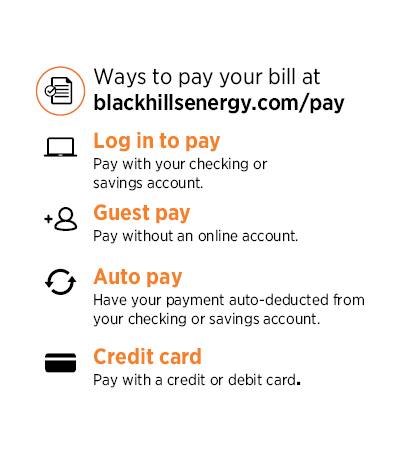
We offer several ways to pay your bill so that you can pick the one that’s right for you.
Explanation of Arkansas Gas charges
Customer charge: A fixed monthly charge, separate from energy usage, that recovers a portion of fixed operating costs, such as customer accounting and services, as well as costs associated with our investments in customer-related facilities such as meters and service lines.
Delivery charge: This charge is based on your natural gas usage and recovers costs associated with delivering natural gas to your home through the pipeline system.
Primary gas charge: The estimated cost Black Hills Energy pays for the natural gas that is delivered to customers. Any costs incurred by Black Hills Energy are passed-thru dollar-for-dollar to customers without markup in price.
Secondary gas charge: This charge reconciles the difference between actual cost of gas used and estimated cost.
Storm Uri gas charge: This charge recovers the cost for natural gas incurred during the extraordinary winter weather event that occurred in February 2021.
Act 310 Surcharge: This charge recovers investments for legislative and regulatory requirements to ensure the safety and protection of public health and the environment.
Energy efficiency: This charge recovers the cost associated with promoting energy efficiency programs as ordered by the Arkansas Public Service Commission.
Weather normalization adjustment: This charge reduces the effect of abnormally cold or warm weather. Adjustments are made to bills between November 1 and April 30 and are based on weather conditions during the billing cycle.
Franchise fee, county and state sales tax: Fees and taxes collected and paid to the city, county and/ or state based on city, county, and state laws.
Safety and Integrity charge: This charge recovers the cost associated with the completion of safety and integrity investments that are mandated by Federal and State gas pipeline codes and regulations.


